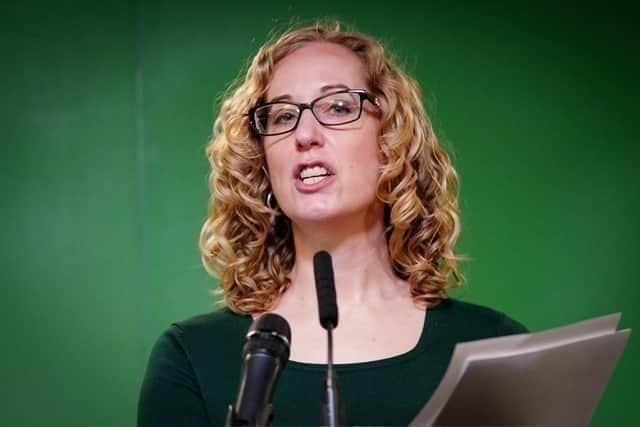Changing the way we heat our homes can cut bills and protect our planet - Lorna Slater


Yet, over the last two years, we have seen energy bills skyrocketing with the soaring price of gas. These extortionate bills have plunged far too many people into poverty and have been one of the key drivers of the cost of living crisis.
As long as energy bills and the cost of fossil fuels are so entwined we will continue to be at the mercy of price fluctuations and volatile energy markets.
Advertisement
Hide AdAdvertisement
Hide AdSomething has to change. That change was set out in the Scottish Government’s Heat in Buildings Strategy two years ago and is a vital part of our climate plan.
By 2045 Scotland has a legal obligation to cut climate emissions to zero. We also have a commitment to be 75% of the way there by 2030. These legal commitments were backed by all parties in the Scottish Parliament.
Change of that scale can’t be achieved by business as usual. It means big changes in how we travel, how we grow food and use land and how we heat buildings. That is where the Heat in Buildings Plan comes in.
Over this decade and beyond we need to dramatically accelerate how we heat homes and other buildings, in two ways. Firstly, we need to reduce energy demand by making buildings more energy efficient. The Scottish Government has a target to raise energy efficiency standards for all buildings by 2033.
Advertisement
Hide AdAdvertisement
Hide AdBut insulation is not nearly enough to meet legal targets. So, by 2045 almost all buildings will have to move away from fossil fuels like gas and oil - most obviously to be heated by electric sources made from renewables.
At the moment the two main ways to do this are through heat networks (where more than one building draws on a common heat source) or through individual heat pumps - a technology which is decades old, highly-efficient and already installed in thousands of Scottish homes.
The good news is Scotland is not alone. Across the UK, the same solutions are being looked at. Indeed, in the switch over to heat pumps, the UK is already far behind. Most countries in Europe are adopting heat pumps far faster than in Scotland - with the fastest progress being made in countries which are colder than Scotland - Norway, Sweden, Finland and Estonia.
The other good news is that Scotland offers the most generous package of support in the UK: a £7,500 grant for switching to a heat pump; similar help for energy efficiency work. For neighbourhoods looking at heat networks, a £300m pot has been made available to get plans up and running.
Advertisement
Hide AdAdvertisement
Hide AdSince the middle of the last century, Edinburgh and the wider region moved away from the coal fires which gave the city its nickname “Auld Reekie”.
We know now that oil and gas are technologies of the past. It’s time now to get behind the heat transition - tackling energy bills, ending climate pollution and supporting thousands of skilled jobs.
Lorna Slater is the minister for green skills, circular economy and biodiversity
Comment Guidelines
National World encourages reader discussion on our stories. User feedback, insights and back-and-forth exchanges add a rich layer of context to reporting. Please review our Community Guidelines before commenting.